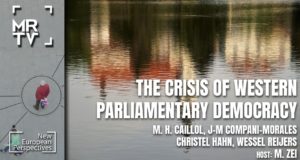Recital 1 of the European Framework Directive establishes as a principle: “Water is not a commodity like any other, but a heritage that must be protected and treated as such”. Although the Directive was implemented in 2000, the European Union did not wait until the end of the 20th century to pursue an active environmental policy. Since the 1970s, it has been a question of preserving natural resources and protecting the health of citizens. In accordance with the principle of subsidiarity, the aim is to compensate for the wanderings of many Member States in the environmental field and particularly in the field of water.
The European Union has spent €200 million through financial instruments. This is part of the 6th Environmental Action Programme defined in the framework of the Sustainable Development Strategy for the period 2005-2010 and decided during the Gothenburg European Council in 2001. 4 objectives and 2 principles are clearly identified. The objectives are:
– preservation, protection, improvement of the quality of the environment,
– protecting the health of citizens, or establishing close cooperation between health, environmental and research stakeholders,
– prudent and rational use of resources,
– establish the principle of environmental democracy in order to involve citizens in the development of environmental policy. In this sense, the European Union has acceded to the “Aarhus Convention”[1].
2 principles have been put in place in conjunction with the objectives. This is the:
– precautionary principle,
– the polluter pays principle.
The definition of these objectives and principles only makes sense in the affirmation of an institutional organization. The distribution of powers first fell under shared competence, then the Single Act in 1986 established the competence of the European Community, before the Maastricht Treaty introduced the co-decision procedure. To this end, the European Environment Agency (EEA), with its headquarters in Copenhagen, has been set up. Its main tasks are to carry out studies, inform and alert about the risks of environmental damage.
The European Union’s water policy is divided into two phases. The first phase ran from 1975, the date of the first directive, to 1995. The second phase is symbolized by the adoption of the 2000 Framework Directive.
Since 1975, some thirty directives have been adopted and established according to two principles: either a systematic approach to the control of spills of dangerous or polluting substances, or a more targeted approach, defining quality standards for specific areas or used for specific purposes. The European regulatory architecture was therefore very complex and difficult to understand. The glaring lack of a global vision is obvious. However, two directives will have a major impact on the role of the European Union, not in terms of the environment, but in terms of managing the public service of water supply and sanitation. In 1991, the “Urban Wastewater[2]” and “Nitrate[3]” Directives were adopted (pollution by nitrates from agricultural sources). These two directives require very significant funding from local authorities. Sometimes it is the entire organization (institutional and contractual) of a community’s water service that is disrupted. The management approach used by some communities is no longer in line with the necessary compliance funding required by the directives. Although this is not the only reason why some water services have opened up to private companies, there is a compelling reason in the European decisions taken in 1991. As a result, the European Union has taken on another issue of local services of general interest: the management mode. While the Union has always had an active policy towards environmental issues and therefore the protection of the resource, the same cannot yet be said for the way it is managed.
In 2003, the definition of sensitive areas relating to the “nitrate” directive had increased by 9 points, since the rate was 44.4% in 2009 compared to 35.5% in 1999. 81% of the “urban waste water” directive was applied on the same date, although two problems remained latent: the lack of appropriate treatment and the definition of “sensitive areas” imposed by the directive remained low. To meet this crying need for funding, the European Union has allocated significant amounts of money to co-finance wastewater treatment plants. Over the period 2000-2006, Europe spent 9 and 5.6 billion euros respectively in the Europe of 15 and 12 CEECs. The Commission has thus assessed the need of States in Europe at €35 billion in order to comply with the Directive. This explains one of the reasons why public organisations have turned or are looking to turn to private operators.
The opening to the private sector brings the question of management methods into the context of the establishment of the common market, the very essence of the “Europe object”, strongly reaffirmed by the adoption of the Single Act. The latter aimed to establish the common market and thus the 4 freedoms (free movement of goods, merchandise, persons and services). SGIs[4] and SGEIs are covered by this decision, as evidenced by the reforms undertaken mainly in the transport and telecommunications sector. Local water-related SGEIs are excluded and for the time being there is no reason to believe that a decision will be taken in the near future. This in no way prevents the Commission from reflecting on this and asking itself the question of the most efficient form of liberalisation. It is therefore very important to monitor the drafting of the “Reform Treaty” since the formalization of the Intergovernmental Conference in charge of its drafting, following the decision of the European Council in June 2007 to propose a new treaty to Europe due to the non-ratification of the Treaty establishing a Constitution in 2005.
From the 1990s onwards, it became clear that the European Union’s environmental policy was unclear and that the large number of directives made the content even more vague than it already was. A reflection on the follow-up was therefore initiated. Two principles therefore dictated the approach:
– Provide a legislative, effective and transparent framework for Member States,
– To provide common objectives for EU policies in order to capitalise on different experiences.
It is in this spirit that the 2000 European Framework Directive[5] will be decided and voted on. As its name suggests, the latter provides a legal framework for Europe to:
– to extend hydrological protection to all waters,
– to achieve good ecological status for all waters by 2015,
– to base hydrological management on river basins,
– to combine emission limit values and environmental quality standards,
– to apply pricing that encourages the rational use of water resources,
– to involve citizens more closely,
– and above all to rationalise Community legislation.
In its communication of 22 March 2007, the European Commission reported on the many difficulties encountered by Member States in transposing the Directive. As a result, 11 infringement proceedings were decided, 5 of which resulted in a conviction for failure to communicate. Transposition in 19 Member States contained “serious shortcomings”. For example, Articles 4, 9 and 14 have not been fully transposed.
This is why the European executive recalls its commitments, values and principles[6] while encouraging States to properly apply all Community legislation, particularly that relating to the Urban Wastewater and Nitrate Directives, and to implement the appropriate economic instruments. This concerns a pricing system that takes into account the costs of water services, environmental costs and the polluter-pays principle. The establishment of public policy instruments is not sufficient, as the evaluation of the effectiveness and efficiency of the instrument is necessary, and the European Commission advocates the development of a national evaluation system that can inform it. Its role is therefore top-down in assessing the policies implemented and bottom-up in informing the Community institutions. Finally, Dominique Lorrain[7] speaks of the disarray of politics to demonstrate the technicalization of questions and thus of their corollary depoliticization. Europe therefore wants to involve citizens in policy making. There is a distress among citizens-users-customers in the face of the depoliticization of public policies. Citizens perceive the difficulty of elected officials to regain control of the supremacy of technology. Can the use of participatory democracy remedy this double disarray?
The proven link between environmental water policy and public water supply and sanitation services is reinforced by the decision not to replace the Directives on the quality of water intended for human consumption by the WFD. Directive 80-777 of 15/07/1980 imposes quality standards higher than those recommended by the World Health Organization and defines maximum quantities not to be exceeded[8]. Local authorities are obliged to inform the population if these rates are exceeded. On 3 November 1998, a new directive (98/83) was adopted, also on the quality of water intended for human consumption, updating the standards and reforming the control procedures. The control of the quality of the consumer’s tap water has become an obligation. With the adoption of this new directive, Europe is becoming more and more restrictive in environmental matters. Indeed, the quantity of lead originally set at 50 μg/l must be less than 25 μg/l on 25 December 2003 and only 10 μg/l on 25 December 2013. By adopting a text dated 22 March 2007, the European Parliament wishes to strengthen the protection of surface waters and thus strengthen Europe’s active and binding policy.
This has a double consequence. Many European regions face difficulties in meeting these standards such as Brittany, as evidenced by France’s condemnation under Directive 75/440 of 1995 for non-compliance with nitrate standards, failure to inform the population and insufficient measures taken[9].
In the text, Europe has succeeded in implementing a global policy for the protection of the resource through the involvement of an integrated policy (which takes into account all sectors of activity having a more or less direct link with the protection of the resource), considering water as part of the same unit and promoting decisions at the level of pollution or degradation. The Framework Directive has therefore imposed a global approach open to citizens, specified by the application of a rigorous timetable and standards.
If the 2000 WFD represents a crucial step, it does not, of course, resolve all the issues raised[10]. By 2015, each Member State must achieve “good ecological status” of resources. The effort of countries and the effectiveness of the resource must be assessed by performance indicators. What criteria are used then?
In addition, as we have seen above, the principle of cost recovery calls into question the current financing of water services and the long tradition of subsidies. What models are likely to be applied? As Bernard Barraqué points out, some Orthodox economists considered the existing equalization payments in France of a temporal and territorial type or in Germany of a transversal type as disguised subsidies. This principle suggests, despite cost reductions, that for some environmentalists, this favours polluters. In Great Britain, privatisation was made possible not only because of the cancellation of the debt of the Regional Water Authorities, but also because of what has been called the “green dowry”, which consisted of a subsidy more than 20 times that given in France or Germany. This raises once again the question of financing water supply and sanitation services and thus the organization of management methods.
Finally, Europe has once again affirmed the duty to involve the public. The challenge is threefold: to inform about the ecological state of the natural environment, to exchange information in order to better take into account their wishes in order to have appropriate political responses and to limit as much as possible the political disarray of citizens towards elected officials. But two questions are raised: how is representativeness organized? Today many associations already have their own opinions on water management issues. Are they representative of the entire population? How to organize a debate taking into account all sensitivities? Finally, is there not a risk of being confronted with a judicialization of the issue? Indeed, as Christelle Pezon fears[11], some associations wish to resort to the judicial process and therefore to the highest legal authorities to see their ideas prevail. While it is not necessarily necessary to share Christelle Pezon’s idea of making the Conseil d’Etat the great French regulator, it must at least be recognised that the risk of legal proceedings is largely possible.
The European Union has therefore relayed in its policy the advice provided by Eurowater[12], which consists of the 3Es: Ethics, Economy, Environment. The national implementation of these designs is not yet definitive. There is still one more seven years to go before this principle is fully established. Indeed, some countries do not have a strong tradition of participatory democracy. It must take time for the dynamics involved to be efficient. It is also in this sense that the European Union has launched the WISE programme, which is a water information system. Moreover, while European measures to protect the resource are binding and the European Commission ensures that the texts are applied, the case of Brittany demonstrates all the difficulties in implementing a real policy. This makes the link with the issue of pricing. If the principle of cost recovery is applied in practice, then the bill will skyrocket. It will be much higher than the increase observed since the 1980s. But will users, the main financiers of water policy through the invoice, accept to pay? It is certain that they will refuse. There are two possible reasons for this. First of all, the price of water is already considered excessive. Then, will they still agree to pay in place of polluters (in contradiction with the polluter-pays principle). This is where the example of Brittany is very interesting. Our intensive agriculture is no longer viable. It therefore becomes important to change behaviours. There is no need to wait for the reform of the Common Agricultural Policy like the grail. Actions by the authorities in charge of water policies can be carried out. The most convincing example is that of the municipality of Munich. The latter has embarked on two programmes, first by reforesting the protection zone of the water catchment field and second by purchasing local agricultural production through a contract with farmers meeting certain specific crop standards. Sales of agricultural products with the objective of providing school canteens. This reduces the cost of producing drinking water.
In this respect, the informal meeting of environment ministers held in Portugal on 31 August allowed government representatives to reaffirm the statements made by the committee in its interim report on water scarcity and droughts in June 2007. While cooperation and the transmission of information between the different levels are desired, 3 essential points emerge:
– improve the management of river basin districts
– reduce consumption leading to a possible 40% reduction in urban wastewater
– new infrastructure is possible if all other solutions have proved ineffective.
By appropriating the question of resource protection, Europe has taken on board the question of competitive management methods. The question today is how to finance our water services while keeping the principle of the 3Es. The European Union must therefore intensify its integrated policy by asking itself, for example, the question of the future of agriculture. For their part, Member States must promote a more environmentally friendly use, although a more rational use of water means less intensive use and therefore an increase in the price of water. It is moreover to this conclusion that the European Commission comes to: it is impossible not to increase the price of water. The risk underlying this increase is the diversion of populations from public water services.
* Fabien Dupuis is a researcher within the framework of the EuroFuturs 2030 programme initiated in April 2007 by LEAP/E2020
Born on 3 November 1980 in Limoges, he is currently a doctoral student in political science at the University of Paris II Panthéon-Assas and attached to CERSA (Centre d’Etudes et de Recherches de Science Administrative).
Fabien Dupuis is currently working on the role of the European Union in the public service of water supply and sanitation in relation to the German, French and Dutch systems. During his studies in economics and international relations, he focused his research on water issues through three dissertations: The Tiger and the Euphrates as a source of conflict, The commodification of water as a way of managing a scarce resource? and the delegation of public water and sanitation services: the example of Paris.
In parallel to his university studies, he was an intern at Hubert Védrine Conseil and Notre Europe, a research and reflection group created by Jacques Delors. He was thus able to collaborate on the policy paper, Forgiveness and Promise, for a more regional approach to the Western Balkans issue by the European Union.
1] The provisions concerning public information have been reinforced, inter alia, by the Aarhus Convention signed on 25 June 1998 in Denmark by 39 States. Adopted pursuant to Article 10 of the United Nations Economic Commission for Europe Rio Declaration for the European Region, the Aarhus Convention covers access to information, public participation in decision-making and access to justice in environmental matters. It is divided into the following categories:
– Develop public access to information held by public authorities, including transparent and accessible dissemination of key information
– Promote public participation in decision-making that has an impact on the environment. In particular, it is intended to encourage public participation at the beginning of a development procedure, “i.e. when all options and solutions are still possible and the public can exert real influence”. The result of its participation must be taken into account in the final decision, which must also be the subject of information.
– Extend the conditions for access to justice in environmental legislation and access to information
France has made a twofold commitment to the transcription of the Aarhus principles. First of all, as a direct signatory, this international convention has, once published, an infra-constitutional and supra-legislative value. The Aarhus Convention, approved by Law No. 2002-285 of 28 February 2002 and annexed to the publication decree of 12 September 2002, therefore entered into force on 6 October 2002.
This international convention contains provisions of direct effect, i. e. which can be directly invoked before the French courts without the need for integration into the legislation.
. In terms of the right to information, the deadline for responding to the requesting citizen is one month, whereas the French regulation allows two months.
. Access to a document may be refused where a trade secret is protected by law to protect a legitimate economic interest. However, in this context, information on emissions that is relevant for the protection of the environment must be disclosed. However, the Commission d’accès aux documents administratifs (CADA) has always refused to disclose to the public individualized statements of effluent analysis for a plant because they could reveal manufacturing processes. The French government has confirmed CADA’s position.
. The convention involves the public in the decision-making process through its consultation at a very early stage, according to a procedure that exists in France only for projects submitted to the public debate commission.
2] Directive 91/271/EEC concerns the collection, treatment and discharge of urban waste water and the treatment and discharge of certain waste water, mainly of industrial origin
3] Member States are obliged to define on their national territory: the surface waters affected, the vulnerable areas that contribute to pollution and therefore action programmes, establish voluntary codes of good practice for farmers, policies for monitoring water quality through baseline measurements and regular reports to the European Commission. Directive 91/676/EEC of 12 December 1991.
4] Service of general interest and service of general economic interest
5] Communication from the European Commission to the European Parliament and the Council, Towards sustainable water management in the European Union (1st step in the implementation of the Water Framework Directive), COM (2007) 128, 22 March 2007.
6] Communication from the European Commission, COM (2007) 128, p. 10
7] Dominique Lorrain is Director of Research at the Centre National de la Recherche Scientifique and a member of the Centre d’Etude des Mouvement Sociaux at the Ecole des Hautes Etudes en Sciences Sociales. His research focuses on infrastructure reforms, with a particular focus on liberalization policies, business strategies and market regulation.
8] The amount of nitrate must not exceed 50 mlg/l. Lead should not be above 50 μg/l, while pesticides should not exceed 0.1 μg/l individually, and 0.5 μg/l in total concentration.
9] Case C-266/99, judgment of 08/03/2001
10] B Barred, the stakes of the European Union’s WFD
11] Senior lecturer at the Laboratory of Water Management and Sanitation of the National School of Rural Engineering, Water and Forests of Montpellier
12] Meeting of researchers, teachers and experts from EU Member States to produce institutional, socio-economic and legal comparisons of sustainable water management in Europe


 LEAP2040 Toutes les informations et archives Europe2040
LEAP2040 Toutes les informations et archives Europe2040


